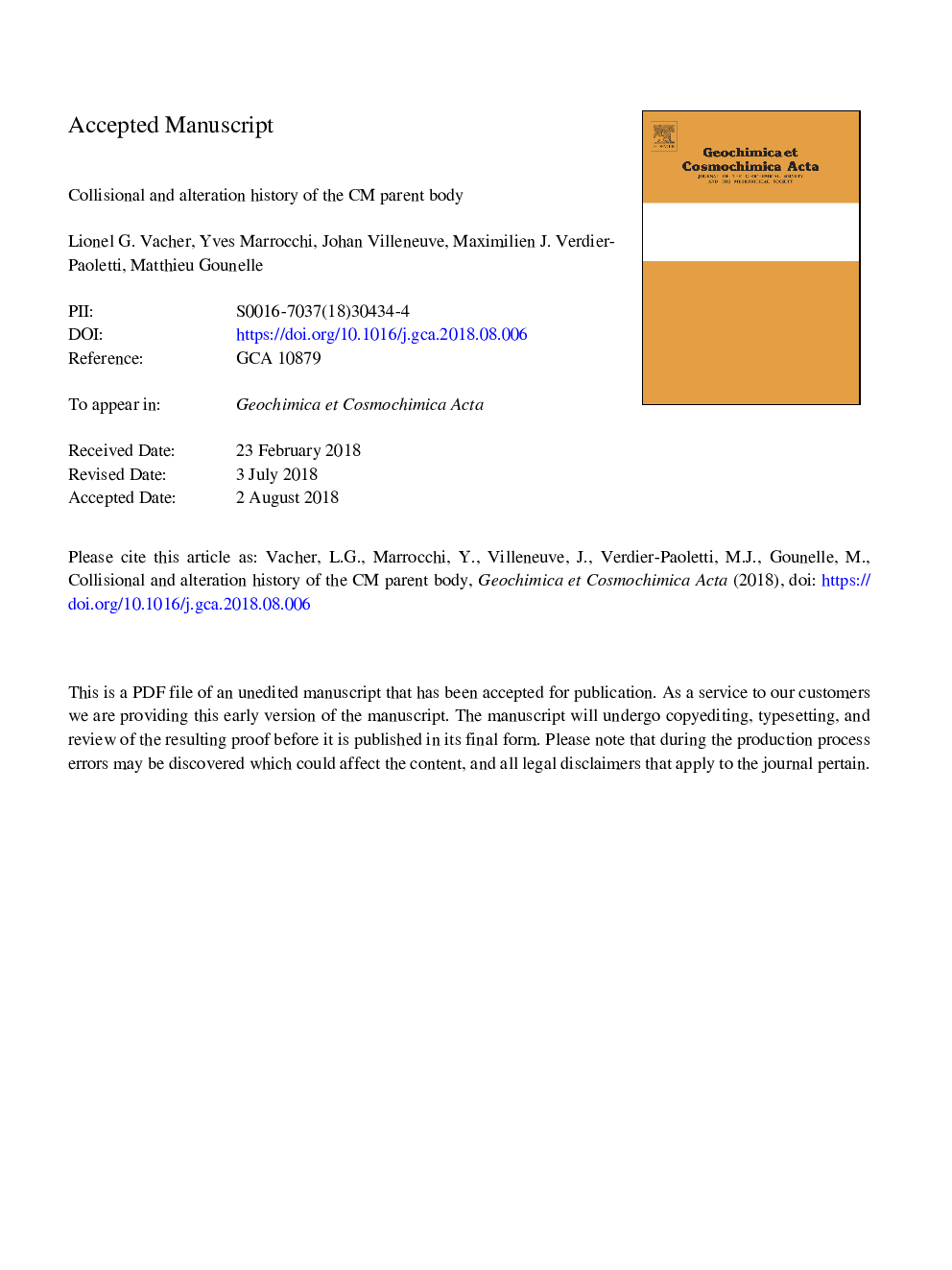| کد مقاله | کد نشریه | سال انتشار | مقاله انگلیسی | نسخه تمام متن |
|---|---|---|---|---|
| 8910573 | 1637918 | 2018 | 70 صفحه PDF | دانلود رایگان |
عنوان انگلیسی مقاله ISI
Collisional and alteration history of the CM parent body
دانلود مقاله + سفارش ترجمه
دانلود مقاله ISI انگلیسی
رایگان برای ایرانیان
کلمات کلیدی
موضوعات مرتبط
مهندسی و علوم پایه
علوم زمین و سیارات
ژئوشیمی و پترولوژی
پیش نمایش صفحه اول مقاله

چکیده انگلیسی
Boriskino is a little studied CM2 chondrite composed of millimeter-sized clasts of different lithologies and degrees of alteration. Boriskino thus offers a good opportunity to better understand the preaccretionary alteration history and collisional evolution that took place on the CM parent body. The least altered lithology displays 16O-poor Type 1a calcite and aragonite grains (δ18Oâ¯ââ¯30-37â°, δ17Oâ¯ââ¯15-18â° and Î17Oâ¯ââ¯â2 to 0â°, SMOW) that precipitated early, before the establishment of the petrofabric, from a fluid whose isotopic composition was established by isotopic exchange between a 16O-poor water and 16O-rich anhydrous silicates. In contrast, the more altered lithologies exhibit 16O-rich Type 2a and veins of calcite (δ18Oâ¯ââ¯17-23â°, δ17Oâ¯ââ¯6-9â° and Î17Oâ¯ââ¯â4 to â1â°, SMOW) that precipitated after establishment of the deformation, from transported 16O-rich fluid in preexisting fractures. From our petrographic and X-ray tomographic results, we propose that the more altered lithologies of Boriskino were subjected to high intensity impact(s) (10-30â¯GPa) that produced a petrofabric, fractures and chondrule flattening. Taking all our results together, we propose a scenario for the deformation and alteration history of Boriskino, in which the petrographic and isotopic differences between the lithologies are explained by their separate locations into a single CM parent body. Based on the δ13C-δ18O values of the Boriskino Type 2a calcite (δ13Câ¯ââ¯30-71â°, PDB), we propose an alternative δ13C-δ18O model where the precipitation of Type 2a calcite can occurred in an open system environment with the escape of 13C-depleted CH4 produced from the reduction of C-bearing species by H2 released during serpentinization or kamacite corrosion. Assuming a mean precipitation temperature of 110â¯Â°C, the observed δ13C variability in T2a calcite can be reproduced by the escape of â15-50% of dissolved carbon into CH4 by Rayleigh distillation.
ناشر
Database: Elsevier - ScienceDirect (ساینس دایرکت)
Journal: Geochimica et Cosmochimica Acta - Volume 239, 15 October 2018, Pages 213-234
Journal: Geochimica et Cosmochimica Acta - Volume 239, 15 October 2018, Pages 213-234
نویسندگان
Lionel G. Vacher, Yves Marrocchi, Johan Villeneuve, Maximilien J. Verdier-Paoletti, Matthieu Gounelle,